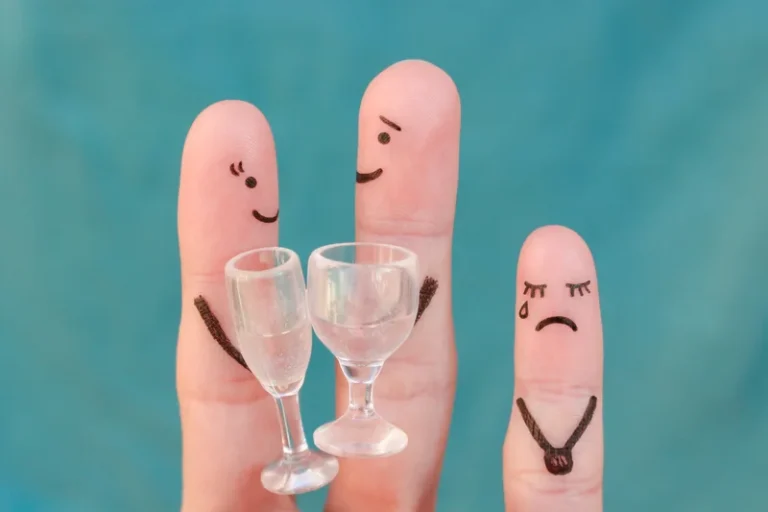Chapter 1, Sloka 19 Sa ghoṣo dhārtarāṣṭrāṇāṁ hṛdayāni vyadārayat,nabhaś ca pṛthivīṁ caiva tumulo vyanunādayan. After hearing the collective blowing of the conches by the Pandava army, the resounding
READ MORE

Alcohol intolerance occurs when your body doesn’t have the proper enzymes to break down (metabolize) the toxins in alcohol. This is caused by inherited (genetic) traits most often found in Asians. American Addiction Centers (AAC) is committed to delivering original, truthful, accurate, unbiased, and medically current information. We strive to create content that blurry vision hangover is clear, concise, and easy to understand.

They tend to be pretty obvious, signaling that the brain is under the influence. From there, alcohol can cause the blood vessels in your eyes to swell, which leads to bloodshot eyes. Moreover, bloodshot eyes can be a sign of more serious complications such as high blood pressure, diabetes, and addiction. The potential long-term issues relate to changes to the eyes’ structures or the communication between the eyes and brain. These effects may be more permanent and can include reduced vision, migraine headaches, sensitivity to light, and even blindness. A person who experiences vision issues should see an ophthalmologist — a doctor specializing in eye care.
When your liver isn’t working as it should, it can cause high levels of this substance. A more serious side effect of heavy drinking is a yellowish tint in the whites of your eyes. This is a sign of jaundice and the beginnings of liver disease or cirrhosis. It can also affect your sleep, increase inflammation in the body, and cause weight gain if you’re not careful about calories in those umbrella drinks. Alcoholic face is a series of obvious facial changes from excessive alcohol use.

Complications of alcoholic hepatitis are caused by scar tissue on the liver. That can raise pressure in a major blood vessel called the portal vein and cause a buildup of toxins. Alcoholic hepatitis is swelling, called inflammation, of the liver caused by drinking alcohol. Treatment options for more serious cases depend on the cause of your bloodshot eyes, but they generally involve lubricating drops or ointments prescribed by a doctor or optometrist. You might be wise in limiting your consumption of alcohol to special occasions, dinners, and celebrations. In the case of damage to the eye from alcohol abuse, it is best to be wise in preventing it.

This condition severely affects central vision, crucial for reading, driving, and facial recognition. It poses a significant risk, especially for older adults, impacting essential daily activities and overall quality of life. The eyes become bloodshot because tiny blood vessels on the eye surface become red and inflamed.
Heavy drinkers often neglect proper dietary intake, while focusing on alcoholic beverages instead of healthy food that provides essential nutrients. Due to conflicting evidence on the role alcohol may play in chronic vision conditions, more research is necessary to clarify the long-term effects of heavy alcohol use on the eyes. So far, we’ve seen that “alcoholic eyes” can refer to a range of symptoms, each related to alcohol’s extensive impact on the body. Over time, the liver cells get damaged, leading to fatty deposits, inflammation, and scarring — all of which hinder its ability to process bilirubin.
At Florida Eye Specialists and Cataract Institute, we are proud to deliver personal service that has ensured the satisfaction of our patients. Your dry eye symptoms may persist if you stop drinking or experience alcohol withdrawal. Many of these conditions can cause significant visual changes, unusual eye movement, and vision loss. Consuming alcohol in moderation, or having two or fewer drinks per day for men and one drink or fewer per day for women, is unlikely to cause long-term eye issues. DED — also known as dry eye, dry eye syndrome, or keratoconjunctivitis sicca — is a chronic condition where your eyes either stop making enough tears or produce low quality tears. Bilirubin is a natural byproduct of the liver doing its job breaking down red blood cells.

Dehydration is a biggie when it comes to dry skin, puffiness, and management of skin conditions like psoriasis or rosacea. The most common sign of alcoholic hepatitis is yellowing of the skin and whites of the eyes, called jaundice. The yellowing of the skin might be harder to see on Black and brown people. Alcoholic hepatitis most often happens in people who drink heavily over many years.
No Schedules for this section.
No Schedules for this section.



